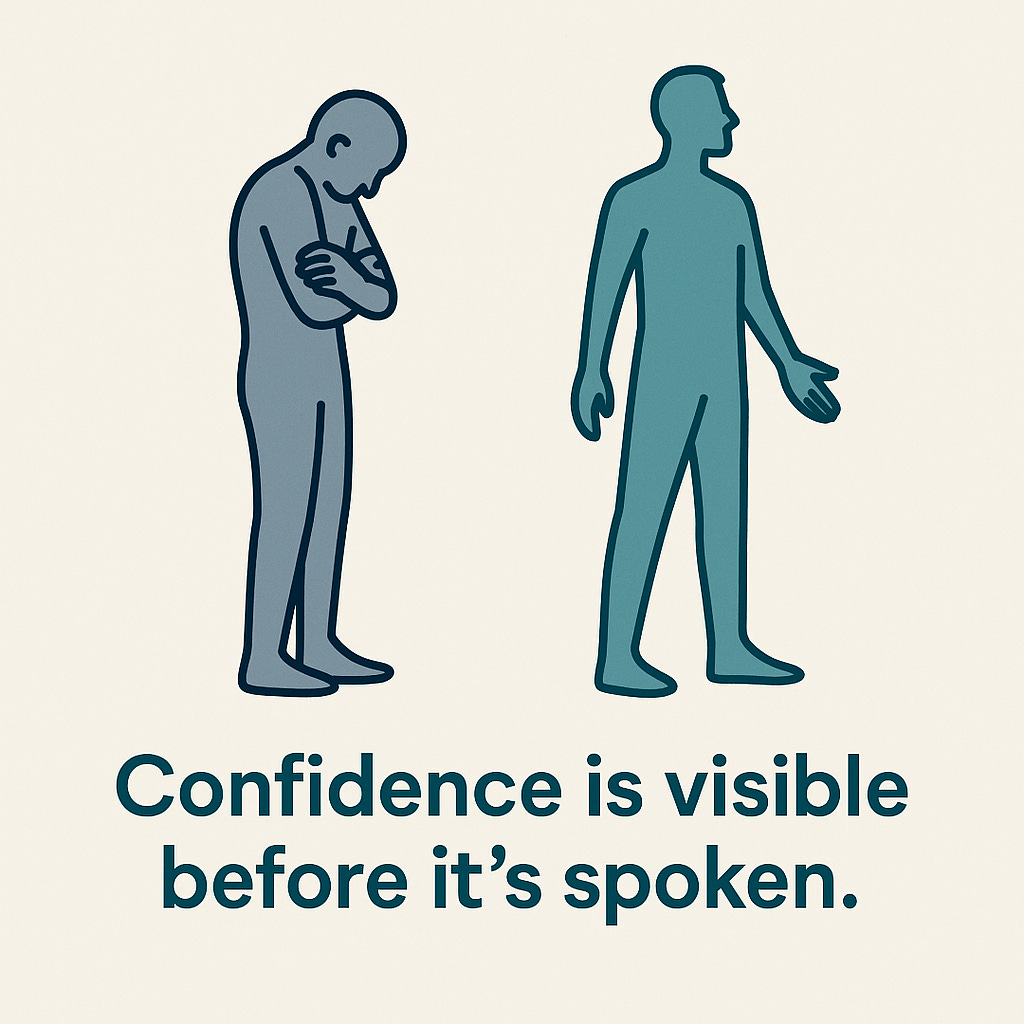Confidence You Can See
How body language transforms technical ideas into trust
When you walk into a room, you start communicating long before you speak. People notice how you stand, whether you smile, how you use your hands, and how you claim your space. The body sends signals that shape perception more quickly than words can.
This is the third signal of calm confidence: the language of the body.
Body language is not decoration. It’s the foundation of presence. Your posture, gestures, and expressions all reveal how you feel inside. If your shoulders are hunched, arms folded, and gaze downcast, you may be delivering brilliant insights—but people perceive hesitation. If you stand tall, gesture with purpose, and smile genuinely, those same insights come across as confident and compelling.
Posture Anchors Presence
A grounded stance—both feet on the floor, shoulders relaxed—projects a sense of stability. It signals that you are anchored, not anxious. This is especially important in technical settings where presentations are data-heavy. A confident posture steadies your delivery, giving your audience assurance that the information is trustworthy.
Gestures Add Clarity
Gestures are like underlining your words in the air. Used well, they emphasize points and keep listeners engaged. Used poorly—such as fidgeting with pens, crossing arms, or hiding hands—they distract. Confidence shows in open, deliberate movements that support your message.
Expressions Create Warmth
Facial expressions round out the picture. A natural smile, steady eyes, and animated expressions bring warmth even to technical material. Audiences trust speakers who appear open and engaged. A blank or tense face, by contrast, makes you seem detached—even if your words are precise.
The psychologist Albert Mehrabian suggested that much of the impact of communication comes from nonverbal cues. While his exact numbers are debated, the principle is clear: how you use your body matters as much—if not more—than the words themselves. A calm body signals a quiet mind. And people read that instantly.
A Lesson in Congruence
Early in my career, I presented a technical roadmap to senior leaders. Midway, one executive stopped me and said, “Your words are strong, but you look like you’re apologizing.” He was right. I was leaning forward, arms crossed, voice soft. My content was solid, but my body betrayed insecurity.
That day, I realized: confidence must be congruent. Your words, tone, and body should align. Otherwise, people believe the weakest signal.
Building the Skill
Ground yourself before speaking. Breathe, plant your feet, relax your shoulders.
Replace habits. Swap fidgeting with purposeful movements—open palms, pointing, or framing your words.
Record and review. Tools like Zoom or Loom reveal habits you may not notice—such as rocking, tapping, or avoiding eye contact. Once you see them, you can change them.
Own the space. Walk calmly to the front, place your notes deliberately, and pause before starting. Even on virtual calls, sit upright and avoid slouching.
For technical professionals, body language is often overlooked. We assume content will carry the day. But in reality, nonverbal signals determine how seriously people take that content. A confident posture and open gestures make complexity accessible. A closed stance makes it uncertain.
The philosopher Epictetus said: “First say to yourself what you would be, and then do what you have to do.” Body language is one way of saying to yourself—and to others—“I am confident.” By acting with openness, you reinforce the state of calm confidence you want to project.
Reflection Prompts
❶ How does my body usually show up in high-stakes moments—grounded, or tense and closed?
❷ What one body habit (posture, gestures, or expressions) could I improve starting today?
❸ How can I use body language to make complex ideas more accessible to my audience?
Language of the body is the third signal of calm confidence. It’s the silent communicator that shapes how people interpret your presence.
In the following article, we’ll turn to the final signal: message tone—the way your voice, pacing, and energy shape confidence before your words are even understood.


